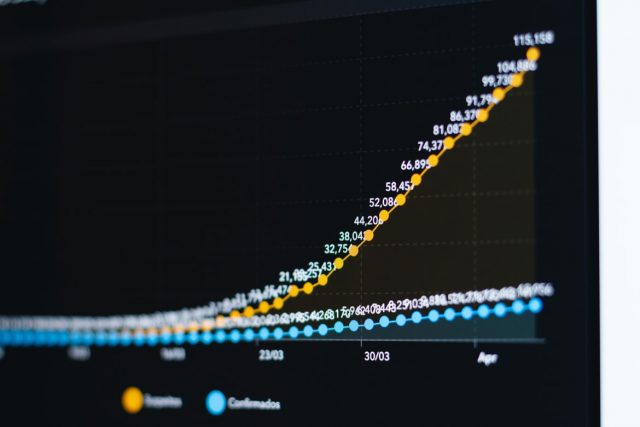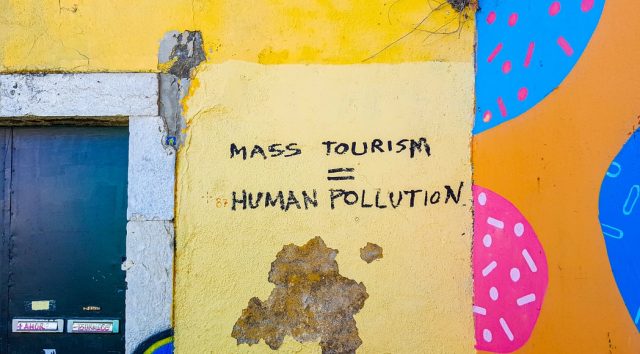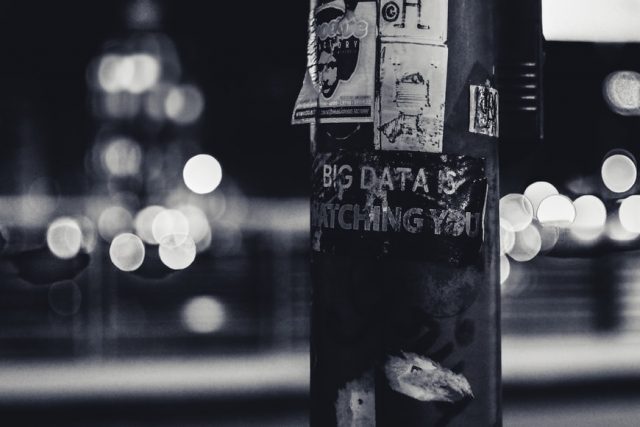Why should Smart Tourism Destinations invest in IoT solutions – or should they?

In recent years, the tourism industry has embraced the idea of Smart Tourism Destinations, emerging from the concept of Smart Cities. In both, the beating heart is the marketing word ‘smart’, representing all things that can be embedded or enhanced by technology¹. In fact, technologies such as cloud computing and the Internet of Things (IoT), and their application to complex logistic problems within cities, originally triggered the concept of ‘smart’ to arise².
IoT particularly has been stated as the next big thing and put at the vanguard of digitalization over the last decade. Somehow, however, this technology still hasn’t hit the great breakthrough in tourism. Why is it so, as it has such a strong correlation with smart destination development? What is holding the tourism destinations back from investing in IoT solutions big time?
Ok wait – a short recap on IoT, please
IoT is a paradigm that involves the presence of a variety of connectable devices such as gadgets, sensors, machines, actuators, and other objects that become interconnected to each other and to higher-level systems and protocols (e.g. Wi-Fi, Bluetooth, GPS), producing automatically-collected data to create services and applications adapted to users’ needs ⁴ ⁵. Sounds complex but is more straightforward in practice. For instance, IoT technology can help making your home smart by enabling you to adjust your lighting, washing machine and other connected devices at your house through one mobile application. In a smart tourism destination, it can denote monitoring the mobility of tourists or tracking visit times in each attraction by turning the presence of nearby devices into statistical data – all in order to gain actionable insights for destination development and for tourism businesses benefit.

Development gaps of IoT
The use of aggregated data, which is integrated into a single decisional platform, has been said to make the IoT concept the key technological solution for the development of smart urban environments⁵. Furthermore, IoT’s capabilities to collect data and transfer it over a network, based on defined algorithms, all without the need for human intervention in the process, have been praised⁶.
If it only was that easy.
Indeed, the economic value of IoT platforms originates from their ability to connect a mass of diverse sensing and actuating devices, yet each solution has different restrictions and capabilities. The gap in the IoT platforms is caused by the lack of communication standards and communication protocols⁴. Jérémy Robert et al. translate the whole IoT abbreviation into “Intranets of Things”. They refer to vertical silos, which cannot easily and efficiently interact with each other⁷. We simply don’t speak the same language – not us nor the IoT systems.

In the context of DMOs (Destination Management Organizations) and their adoption of IoT, running one IoT project is already demanding, not to mention if the collected data should also be harmonized with other data sources. Additionally, there are different IoT solutions available for different purposes: one efficiently tracks the number of visitors while the other intelligently models the mode of transportation. This means you would need multiple IoT solutions to be able to cohesively understand your visitors’ behavior. Moreover, the tourism industry retains such a diverse variety of other kinds of data. Combining all this into a single decisional platform seems practically impossible.
Impediments for DMOs
In reality, IoT still needs quite a lot of human touch. What’s more, IoT solutions most often produce massive, dynamic, varied, detailed and inter-related big data². Big data solely on its own is like the ocean: it’s unbearable and infinite if you don’t know how to navigate with it. Somehow it seems that especially the DMOs tend to be lost at this sea.

Kim Boes, Dimitrios Buhalis and Alessandro Inversini studied the core components of smartness in tourism destination development⁸. By running an in-depth case study analysis on forefront smart destinations, including also IoT projects in their analyzed data set, they found out that along with the distinct presence of technology, there are four additional components of soft smartness: social capital, human capital, innovation and leadership. Technology on its own is insufficient to introduce smartness. Correspondingly, IoT technology can automate the collection of desired data, but someone still needs to plan it, implement it, analyze it and turn it into actions. So what is holding the DMOs back?
Scarcity of suitably qualified staff
This leads us to a burning question of human resources. Being able to sort, analyze and visualize big data consists of a diverse set of skills and knowledge, and DMOs rarely have such resources in-house⁹. If the tourism industry’s future is set to be built on big data, practically all of us who work in destination management would need to be some sort of data gurus. We can of course acquire external services, but we must also look in the mirror: do we have the right skills and knowledge or are we still living in the previous era with our skillset?
Culture of experimentation
Another impediment is agility. Deploying IoT solutions is ideal for agile experiments in smart tourism destinations but are DMOs agile enough as organizations to run them? It’s also a skill to adopt new technologies and these technologies evolve fast. In other words, by the time a DMO makes the decision to acquire an IoT solution, after a thorough investigation and procurement process, the exact technology might already be outdated. Therefore, we should focus on building a culture of using the Internet of Things¹⁰.
Cost-effectiveness
Concerns are raised about the length of time required to implement IoT solutions and their economic viability⁴. These are not necessarily long-term investments, but still, the experiments should be long enough in order to be able to point out regular and irregular fluctuation in the collected data and draw conclusions out of it. And they cost money. Moreover, IoT is developing technology and unexpected costs can occur during the process of deployment. For DMOs, these are red flags.
Dependency on others
Smart tourism destinations are dependent on smart city infrastructure. DMOs cannot assemble IoT infrastructure alone. Such things require collaboration and collaboration within the smart city requires finding mutual goals and interests. However, the tourism industry might have niche requirements. Moreover, IoT integration should follow a certain vision and idea¹⁰ and the architecture needs to be designed in line with the requirements of the destination⁵. It might be challenging for a DMO to drive the change for tourism purposes.

IoT in overtourism management
Despite the obvious challenges, some destinations did still succeed with IoT. In Ávila, Spain, IoT technology was successfully deployed in overtourism management as a part of a wider visitor-flow monitoring system¹¹: An IoT based pedestrian monitoring system was installed in the historic centre of Ávila. Together with urban 3D modelling Mikel Zubiaga, Jose Luis Izkara, Alessandra Gandini, Itziar Alonso and Unai Saralegui were able to calculate occupancy patterns and through this create a dynamic occupancy monitoring system. Smart tourism management applications were introduced both for tourists and city managers. These applications were designed to tackle the imbalance of overcrowding in one place and emptiness in another.

Eventually, the research findings resulted in the creation of a sustainable management strategy for the Ávila historic centre. Moreover, the deployed system has proven its value in assuring long-term social, environmental, and economic sustainability of tourism activities, securing the heritage conservation of the historic center. Outcomes like these are immeasurably valuable, especially when it comes to tackling sustainability issues such as overtourism.
IoT might still be an effort worth taking.
It’s a risky business?
The dangers related to data risks and confidentiality issues have been recited as the main disadvantages of IoT¹⁰ . Data risks include security, protection, quality, accurate analysis and compatibility, whereas confidentiality issues emerge from legal issues and, as already mentioned earlier, the lack of standards, protocols and interoperability.
These disadvantages seem to be the major roadblock for DMO adoption of IoT. Echoing from the disadvantages, reputation risks possess probably the greatest impediment for tourism destinations. Is it ethical to follow the behavior of tourists, even if only statistically? No tourism destination organization wants to be labelled as a ‘big brother’. This might even be a legitimate fear. Only recently the Dutch city of Enschede was fined 600,000 euros by the national data protection authorities for the city’s use of Wi-Fi sensors to measure the number of people in the city center¹². Despite the evidence of not having intentions to track individual people, the authorities still interpreted the case to be in breach of the General Data Protection Regulation (GDPR).

This is of course an example of an escalated case, and it should be noted that such technologies can still be deployed in a privacy-compliant way. Respectively, GDPR compliance has grown to be the core requirement for IoT solutions¹³. So, are DMOs just risk-resistant? We could argue that smart destinations don’t even dare to test IoT solutions as they are so afraid of the ethical and legal issues.
Rule no.1: ask the consumers what they think
The adoption of IoT technologies in tourism has been carefully studied from the system design, data analysis and risk management point of view⁶. However, research on consumer behavior has been left vague.
Interestingly, Vasile Dinu, Sorin Paul Lazăr and Iustin Atanasiu Pop examined the causal relationship between the level of IoT adoption in tourism applications and consumer trust in these systems⁶. Their research hypothesis was that the level of adoption of IoT technologies in tourism is influenced by TAM (Technology Acceptance Model) components: convenience, social influence, habits, confidentiality and safety, awareness, and costs. With an ordered logit model, using a database consisting of 431 Romanian tourists, they were able to showcase a significant influence of behavioral variables connected to awareness, convenience, habits, and cost. However, there was no correlation between the frequency of IoT use and privacy or data security issues found. Consumers seemed to not be seriously concerned about these issues with tourism-related products and applications.

Adam D. Thierer connects the dots by addressing security concerns without derailing innovation¹⁴: “Privacy and security are important values worthy of attention, but so too are innovation, entrepreneurialism, economic growth, price competition, and consumer choice … Although formidable privacy and security challenges are ahead, individuals and institutions will adjust in an evolutionary, resilient fashion, just as they adjusted to earlier disruptive technologies.”
Hence, if the applications enabled by IoT technology are what the customers ask for, then IoT experimentation in tourism needs to continue. Privacy and security concerns about IoT are legitimate and deserve responses, yet DMOs should not paralyze in front of them. Consequently, consumer adoption of IoT enabled applications should be addressed by further research.
Defining end-value
The probing question regarding IoT’s worthiness for smart destinations seems to be the end-value. What do these solutions bring in as a return of investment? For this tourism destinations should weigh the social, economic and technical value these solutions create. At best, IoT technology can help to optimize the whole tourism service chain by producing truly customer-centric solutions: services and applications that the visitors need, not what destination managers or tourism businesses think they might want. Consequently, it can enhance visitor experience and destination competitiveness.
Then again, for smart destinations, the greatest value of IoT might simply lie in innovation. We cannot speak about smart destinations if we don’t have the guts to try something new. Kim Boes, Dimitrios Buhalis and Alessandro Inversini state that “smartness is driven by innovation and innovation drives smartness”⁸. Smart destinations should therefore consider that succeeding with IoT might even make them gain a good reputation. Do you want to be the first mover with IoT technology or let other destinations figure it out first?
References
¹ Boes, K., Buhalis, D., & Inversini, A. (2015). Conceptualising smart tourism destination dimensions. In Tussyadiah, I. & Inversini, A. (Eds.), Information and Communication Technologies in Tourism 2015 (391-403). Lugano, Switzerland: Springer International Publishing.
² Kitchin, R. (2014). The real-time city? Big data and smart urbanism. GeoJournal, 79(1), (1-14).
³ Nicolescu, R., Huth, M., Radanliev, P., & De Roure, D. (2018). Mapping the Values of IoT. Journal of information technology, 33(4), 345-360.
⁴ Albastroiu, I. (2021). Challenges of IoT Technologies for Businesses and Consumers. Amfiteatru economic, 23(57), 321-323.
⁵ Nitti, M., Pilloni, V., Giusto, D., Popescu, V. & Ardagna, C. (2017). IoT Architecture for a Sustainable Tourism Application in a Smart City Environment. Mobile information systems, 2017, 1-9.
⁶ Dinu, V., Sorin, P., & Pop, I. (2021). Factors That Influence the Adoption of the Internet of Things in Tourism by Romanian Consumers. Amfiteatru economic, 23(57), 360-375.
⁷ Robert, J., Kubler, S., Kolbe, N., Cerioni, A., Gastaud, E. & Främling, K. (2017). Open IoT Ecosystem for Enhanced Interoperability in Smart Cities – Example of Métropole De Lyon. Sensors , 17(12), 2849.
⁸ Boes, K., Buhalis, D., & Inversini, A. (2016). Smart tourism destinations: ecosystems for tourism destination competitiveness. International Journal of Tourism Cities, 2(2), 108-124.
⁹ Zach, F. (2016). Collaboration for Innovation in Tourism Organizations: Leadership Support, Innovation Formality, and Communication. Journal of hospitality & tourism research, 40(3), 271-290.
¹⁰ Angelova, N., Kiryakova, G. & Yordanova, L., (2017). The great impact of internet of things on business. Trakia Journal of Sciences, 15(1), 406-412.
¹¹ Zubiaga, M., Izkara, J., Gandini, A., Alonso, I. & Saralegui, U. (2019). Towards Smarter Management of Overtourism in Historic Centres Through Visitor-Flow Monitoring. Sustainability 11(24), 7254.
¹² Autoriteit Persoonsgegevens. (2021). Dutch DPA fines municipality for Wi-Fi tracking. Retrieved 30 October from: https://autoriteitpersoonsgegevens.nl/en/news/dutch-dpa-fines-municipality-wi-fi-tracking
¹³ Badii, C., Bellini, P., Difino, A. & Nesi, P. (2020). Smart City IoT Platform Respecting GDPR Privacy and Security Aspects. IEEE access, 8, (23601-23623).
¹⁴ Thierer, A. (2015). The Internet of Things and Wearable Technology: Addressing Privacy and Security Concerns without Derailing Innovation. Richmond Journal of Law and Technology, 21(2). 1–118.
- Why should Smart Tourism Destinations invest in IoT solutions – or should they? - September 25, 2022